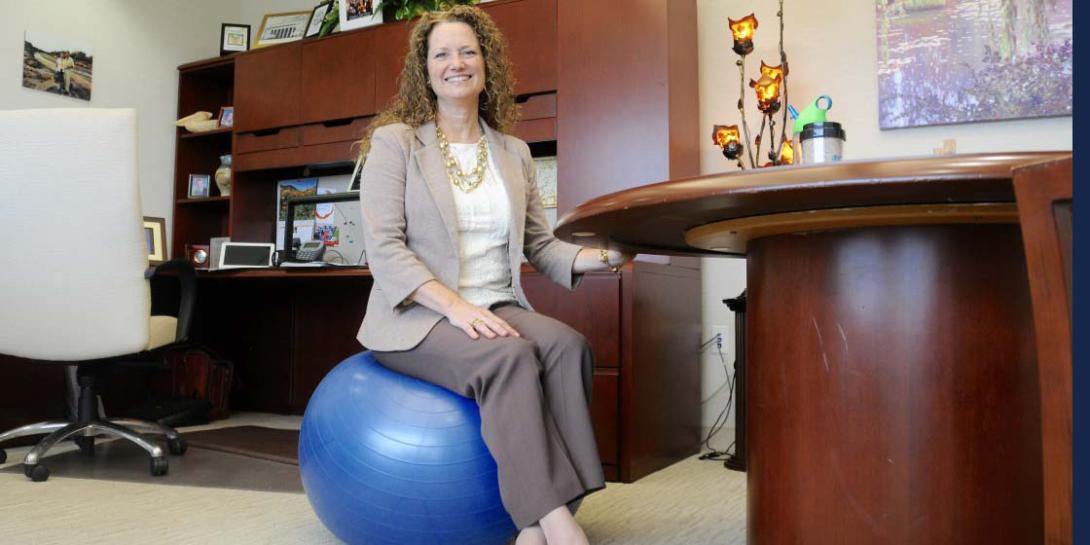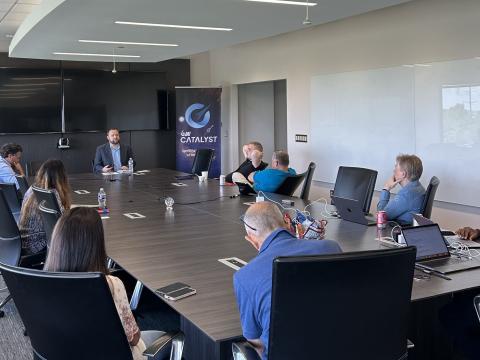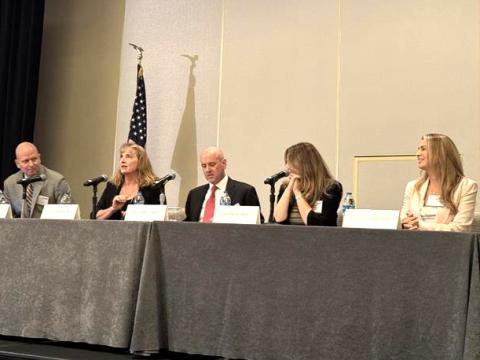Tapping Passions to Attract Women to STEM Fields
It was Star Trek that captured Natalie Givans’ imagination and passion as a girl and helped propel her on a path to boldly go where so few are going today. There is a growing shortage of trained high-tech workers—both men and women—in STEM fields, punctuated by the lack of women who remain in these critical fields after working so hard to earn STEM-based degrees.
SIGNAL Media continues with its multi-month project to highlight women in the fields of science, technology, engineering and mathematics, most commonly referred to as STEM. Today, we highlight the importance of appealing to the passions of the high-tech work force that seeks to make global differences; the positive impact of networking; and addressing the issue of equal pay and acknowledgement. Tech-savvy women in STEM jobs, for example, earn about 33 percent more than women in non-STEM occupations, and while the wage gap still exists when compared to what their male counterparts earn, the gap is narrower. SIGNAL and AFCEA International’s Women in AFCEA address the issues.
It was Star Trek that captured Natalie Givans’ imagination and passion as a girl and helped propel her on a path to boldly go where so few are going today.
There is a growing shortage of trained high-tech workers—both men and women—in science, technology, engineering and math (STEM) fields; and the insufficiency is punctuated by the lack of women who remain in these critical fields after working so hard to earn STEM-based degrees.
“We naturally find that we have a lot of foreign nationals who are filling these positions, or they are taking the positions back to their countries,” says Givans, senior vice president at Booz Allen Hamilton, who is a leader in the firm’s defense business in the cybersecurity arena. “We do a lot of the outsourcing of IT to other countries, where the labor rates are lower and there is just more work force. If we got more women interested, then we would naturally have more of a work force to fill those positions.”
It pays, if women stay. Tech-savvy women in STEM jobs earn about 33 percent more than women in non-STEM occupations, and while the wage gap still exists when compared to what male counterparts earn, the gap is narrower.
Yet in 2014, the American Psychological Association presented research at its 122nd annual convention that nearly 40 percent of women who earn engineering degrees quit or never enter the field. For those who leave, poor workplace climates and mistreatment by managers and co-workers are common reasons.
"It's about the national security, the economic security of this country and it's that women are, in fact, suited for [STEM] careers," says Givans, 53, who chaired the Board of Directors for AFCEA International from 2010 to 2012, and was the first vice chairman from 2008 to 2010. She was a member of the MIT Alumni Association Board of Directors, serving on the finance committee and establishing an ad hoc committee on energy, environment and sustainability for the Alumni Association Selection Committee.
To stem the tide, businesses and organizations must appeal to the passions of the young women well qualified for STEM jobs, shares Givans, who has 30 years of experience in system security engineering, cybersecurity and information and mission assurance. She has an understanding of civilian and military health care, including health IT systems, privacy and security, and electronic health record systems and standards.
Many of today’s youth are driven by desires to solve the world's problems—much as she was when her studies morphed from chemical engineering to electrical engineering while at MIT.
“Part of what was exciting about it was I got into assistive technologies, where you are doing speech recognition, speech processing—and I immediately started to have a passion. But I was in college. It took me that long. I developed a passion around helping people using technology.
“I think you could get more women, you would win the passion, their hearts around environmental sciences, renewable energy, health care—there is a long list of things that women tend to, stereotypically, be interested in,” she continued.
Her advice to budding STEM job seekers, particularly the introverts, is to not make the same mistakes she made when it came to scoffing at the potential benefits of networking, she says. “From a technology standpoint, perhaps, the networking card is the most unique,” Givans offers. “It's one that maybe does apply more to this field than others because of the fact that women aren't seeing each other in large numbers.
“Networking is hugely important. I didn't put a lot of emphasis on it myself probably for the first 15 years of my career here. And I've been at Booz Allen for 32 years. I was always more of a merit-based thinker. I felt that if you worked hard and you know what you're talking about, you get ahead. I don't think I give a lot of credit to the notion that almost everything we do in life is actually more about the people than it is about the topic. It took me a long time to figure out that the networking actually is more important than being really good at what I do—although that's important too,” she stresses.
For decades, the world has witnessed great achievements by women, such as Nancy Roman, credited as the mother of Hubble Space Telescope, who celebrated her 91st birthday on Monday. The nation has been exposed to women astronauts, Supreme Court justices, military leaders and athletes, to name a few.
Why is disparity still an issue?
“Why is it that a woman is running for president, yet we worry about what she's wearing and the tone of voice?” Givans asks. “It really is frustrating that we're still having conversations about whether women are capable of leading the country or otherwise, whether women have to be worried about their physical appearance or tone of voice or how much airtime they take. It's very upsetting.”
The STEM disciplines are peppered with micro inequities and implicit biases that often make it difficult for women to want to stick with it long-term, Givans says. These biases harm women seeking to contribute in what were traditionally male-dominated fields, and the biases can lead to superiors and peers devaluing the work of women. She worked to stick with it.
“I have a lot of tenacity and resilience,” Givans offers. “There was something that my mom and dad must have instilled that said I can do and be anything I wanted, and that nobody could really put me down. It was up to me to define myself.
“When I find some of the darkest times, which haven't been too dark when you look at what people in the world are going through—starvation and war—I'm very fortunate never to have faced anything that horrible. But some of the things that I faced certainly haven't been pleasant in my world. Part of it is putting things into perspective. There are a lot of things that actually give me strength and the ability to know that they are just temporary setbacks.”
Join AFCEA now, where for $50 a year, you can make a difference in the STEM community, for women, students and for national security. Read about AFCEA’s programs for women in STEM.
Join us for AFCEA's first women's panel. "Why Are Women Leaving STEM?" begins at 1:30 p.m. on August 3 in the Engagement Theater at TechNet Augusta. The conversation continues during a networking reception immediately following the session courtesy of panel sponsors Walker and Associates and Ciena.




Comments